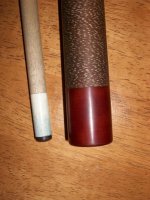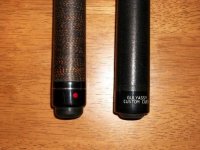I was thinking more for decorative purposes (as are most inlays are). As opposed to sighting line which would be more of a utility but not very decorative.
Originally, I was also thinking a subject like "Cue Design" was restrictive enough that the discussion would center around only decorative aspects, but as we both have seen it's become a bit more expansive.
TW







